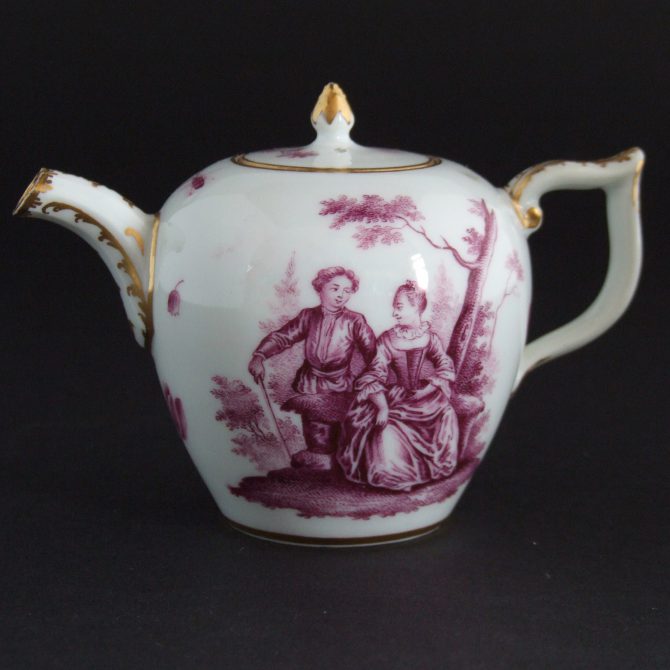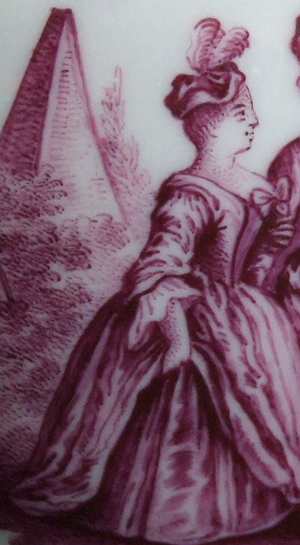
MEISSEN c.1740 – 1750 German Hard-Paste Porcelain
An 18th Century Meissen Porcelain Small or Miniature Teapot c.1740-1750. Decorated in Purple Camaieu with Designs After or Inspired by Jean-Antoine Watteau (1684–1721). The Base with the Mark for Meissen Crossed Swords in Underglaze Blue.
SOLD
- Condition
- In perfect condition
- Size
- In perfect condition
- Provenance
- N/A
- Stock number
- 23885
- References
- For a Meissen coffee pot and a Meissen chocolate cups and trembleuse stand with similar purple camaieu decoration based on Watteau see : A Distinguished Private Collection of 18th Century Meissen Porcelain, Sotheby`s London, 24th November 1998, lots 110 and 111.
Information
Watteau Influence :
Jean-Antoine Watteau (1684–1721) was a French painter whose brief career spurred the revival of interest in colour and movement (in the tradition of Correggio and Rubens), and revitalized the waning Baroque idiom, which eventually became known as Rococo. He is credited with inventing the genre of fêtes galantes: scenes of bucolic and idyllic charm, suffused with an air of theatricality. Some of his best known subjects were drawn from the world of Italian comedy and ballet. Watteau`s design appear on a wide range of 18th century European porcelain, the designs were used many years after his death in 1721. They were used as inspiration and were also copied directly at Sevres and Meissen as well as many other factories during the period of c.1750 to 1770. After this period French scenes of this type gave way to new styles, especially the Neo-Classical. It is worth mentioning that not all of the designs in the style of Watteau were by him, there were many other highly accomplished French artist working in this style at the time.






